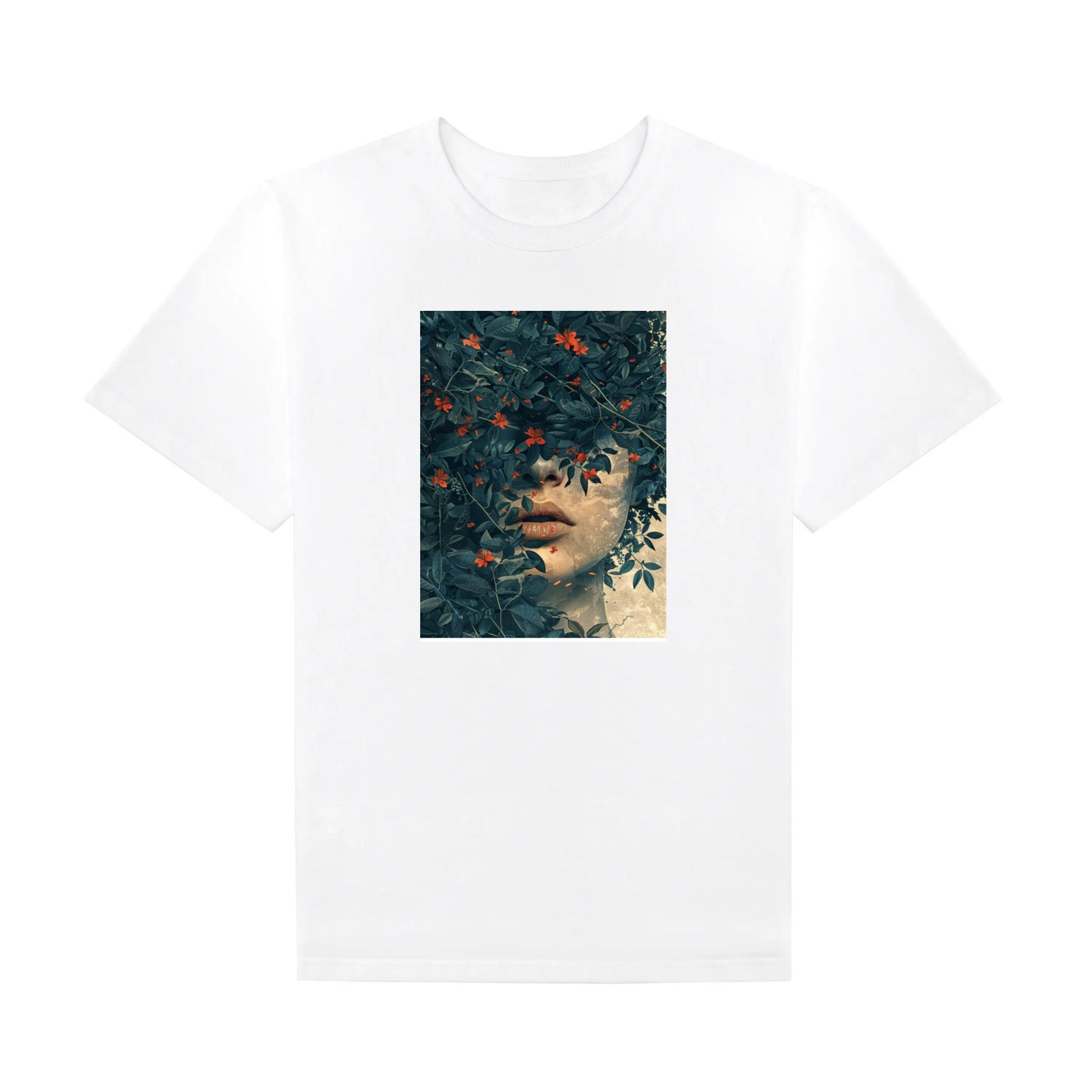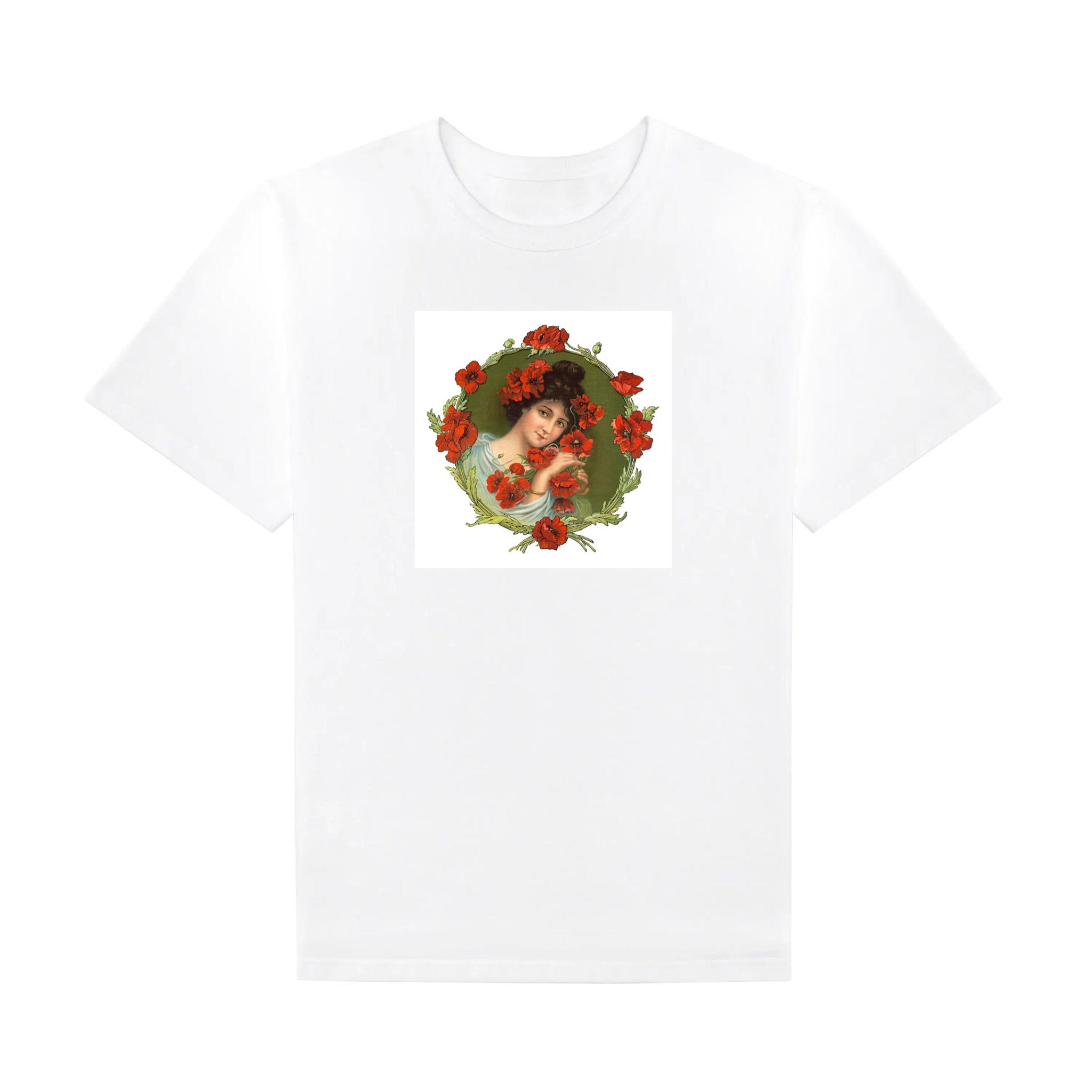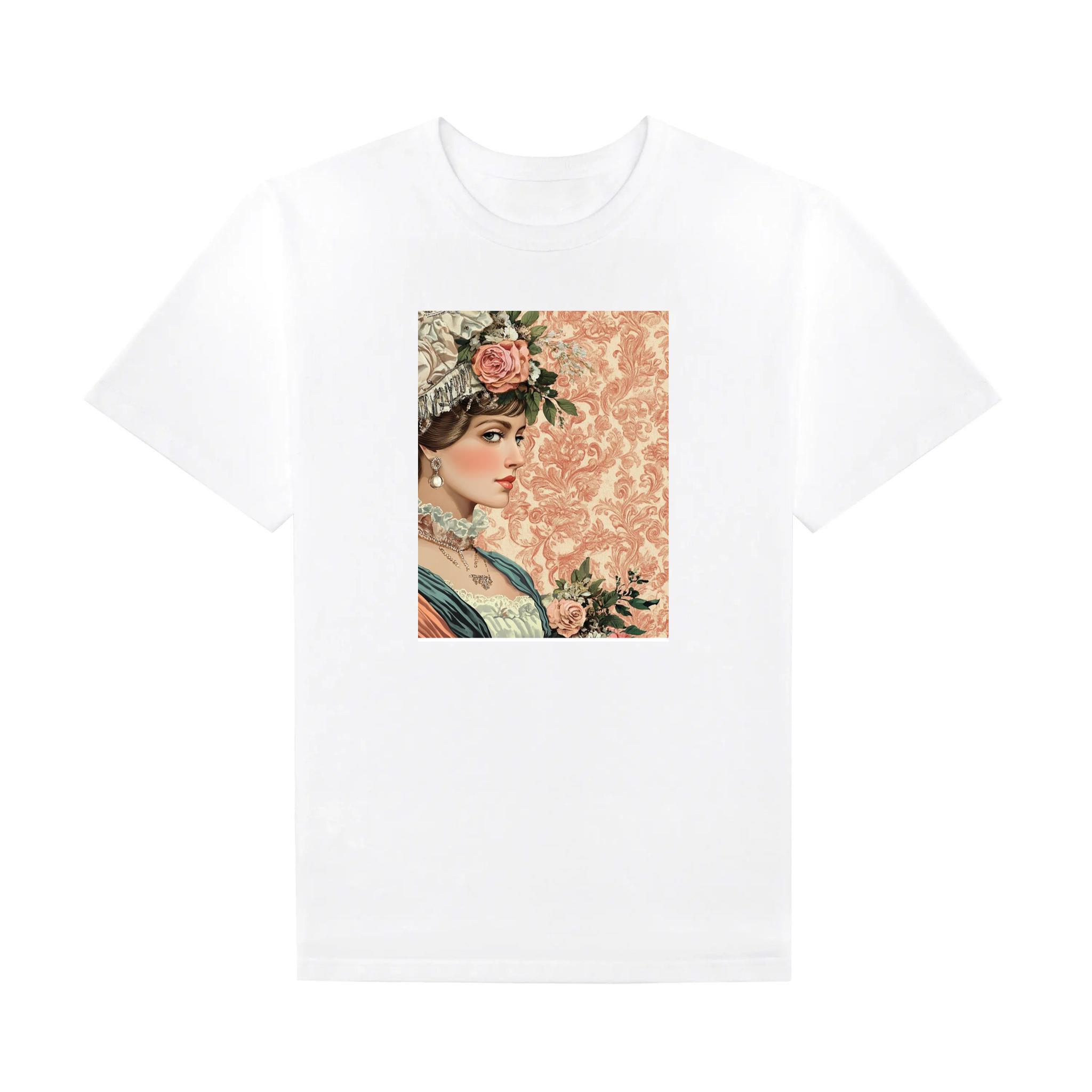Introduction
The T-shirt stands as one of the most democratic garments ever conceived—a simple rectangle of cloth transformed by sleeves and neckline into a symbol of comfort, identity, and innovation. Far more than mere casual wear, the T-shirt transcends borders, generations, and social strata, serving simultaneously as everyday attire, a platform for artistic expression, and even a political manifesto. Its journey from a hidden undergarment to a centerpiece of global fashion speaks to both the garment’s innate adaptability and the shifting tides of cultural history. This exploration delves into the origins, materials, cultural resonance, manufacturing processes, market dynamics, ethical challenges, and stylistic possibilities of the T-shirt, illustrating why this wardrobe staple remains indispensable in a constantly evolving world.
Historical Evolution
The history of the T-shirt is rooted in practicality and necessity. In the early 1900s, the United States Navy sought a lightweight, breathable underlayer for sailors working in tropical climates. They adopted a plain, short-sleeved cotton undershirt, distinguished by its T-shaped silhouette when laid flat. For years, this piece remained strictly utilitarian—worn beneath uniforms but unseen by the public eye.
By the 1920s and ’30s, laborers in fields and factories, particularly in the American South, recognized the comfort and affordability of these undershirts and began donning them as standalone garments. The T-shirt’s status shifted markedly during World War II, as returning servicemen carried memories of their cool cotton shirts back home, wearing them casually with trousers and jeans.
Hollywood further propelled the T-shirt into popular consciousness. In the 1950s, cinematic icons like Marlon Brando in “A Streetcar Named Desire” and James Dean in “Rebel Without a Cause” wore plain white tees to embody youthful rebellion and raw masculinity. The T-shirt, once hidden, now conveyed attitude. This moment catalyzed a transformation: T-shirts moved from undergarment to fashionable outerwear.
The 1960s and ’70s heralded the age of personalization. Advances in screen-printing techniques allowed mass production of graphic tees emblazoned with slogans, political statements, and album artwork. Counterculture movements embraced the T-shirt as a walking billboard for peace marches, civil rights activism, and psychedelic art. Bands and record labels packaged T-shirts as merchandise, forging a lucrative synergy between music and fashion that endures today.
Materials and Manufacturing
Originally woven from 100% cotton, the T-shirt’s fabric repertoire has expanded dramatically in response to technological progress and consumer demand. Conventional cotton remains prized for its softness and breathability, yet concerns about pesticide use and water-intensive farming have spurred interest in organic cotton, grown without synthetic chemicals and often rain-fed rather than irrigated.
Synthetic fibers and blends have also reshaped the market. Polyester-cotton blends offer enhanced durability, wrinkle resistance, and quicker drying qualities, appealing to activewear and athleisure markets. Tri-blends—typically cotton, polyester, and rayon—combine the best traits of each fiber: the natural feel of cotton, the resilience of polyester, and the drape of rayon. Technical fabrics treated for moisture-wicking, antibacterial, or UV-protection properties target athletic and outdoor enthusiasts.
The manufacturing pipeline begins at the fiber stage, where raw materials—natural or synthetic—are harvested or synthesized. These fibers are carded, aligned, and spun into yarn. Knitting machines weave the yarn into tubular fabric, which undergoes scouring and bleaching to remove impurities and achieve a uniform white base for dyeing. Dyeing methods range from traditional vat dyeing, where batches of fabric are immersed in dye baths, to more water-efficient technologies like air-dye or supercritical CO₂ dyeing.
Cutting and sewing remain largely labor-intensive, although automation is on the rise. Laser-guided cutting minimizes waste, while seamless knitting machines can produce finished T-shirt bodies without side seams, offering improved comfort and fabrication speed. Screen printing, heat transfer, and direct-to-garment (DTG) digital printing enable designers to apply intricate multicolor graphics with increasing precision. Each step—from material sourcing to final inspection—impacts cost, quality, and sustainability.
Cultural Significance
The T-shirt’s vast, blank expanse has rendered it a canvas for messages both personal and communal. In youth subcultures—punk, hip hop, skate, goth—tees signify allegiance, ideology, and style. A band’s logo on a concert T-shirt creates a badge of membership; a slogan like “Black Lives Matter” transforms the wearer into an advocate.
Companies employ branded T-shirts to foster corporate identity, with employees donning uniform shirts that reinforce team spirit. Universities and sports teams sell branded apparel that allows supporters to display loyalty. Political campaigns distribute T-shirts to spread slogans and candidate images, turning supporters into mobile billboards.
Regional differences in design reflect local art and humor. Japanese streetwear brands may opt for minimalistic, avant-garde graphics, while Latin American designers might embrace vibrant colors and folkloric motifs. The rise of online marketplaces has democratized access, allowing individual artists and small labels worldwide to reach global audiences with custom designs.
Through social media, T-shirts gain viral momentum. A clever meme printed on a T-shirt can spark trends that spread across Instagram and TikTok, driving rapid spikes in demand. Crowdfunding platforms let creators pre-sell designs, gauging interest before committing to production.
Design and Innovation
Designers consistently reimagine the T-shirt’s silhouette and surface. Variations in cut—cropped, boxy, drop-shoulder, oversized—challenge convention and cater to diverse body types. Fabric innovations introduce textures like waffle knits and ribbed patterns that add visual interest and structural integrity.
Embellishments transform simple tees into high-fashion statements: hand-stitched embroidery, fabric appliqué, sequins, and even laser-cut patterns. Collaborations between luxury brands and streetwear labels—often released as limited-edition drops—fuse disparate aesthetics, generating hype and fostering resale markets.
Technological integration has pushed boundaries further: interactive T-shirts embedded with thin-film LEDs can display scrolling text or simple animations, powered by small battery packs. Others incorporate NFC (Near Field Communication) chips that, when tapped by a smartphone, link to digital portfolios, music playlists, or augmented reality experiences.
On-demand customization platforms empower consumers to design shirts in real time, selecting cut, fabric, color, and graphic placement. This model reduces overproduction by manufacturing each garment individually in response to confirmed orders, aligning with contemporary desires for personalized products.
Market Trends and Economics
The global T-shirt market continues to flourish, driven by evolving consumer behavior and the rise of e-commerce. Online retail platforms simplify design-to-delivery pipelines, enabling direct-to-consumer brands to scale quickly with minimal overhead. Data analytics and AI forecasting help retailers anticipate popular styles and optimize inventory, reducing markdowns and clearing costs.
Fast-fashion giants release new T-shirt collections weekly, capitalizing on social-media-fueled attention cycles. While this model fuels rapid revenue growth, it exerts pressure on supply chains to deliver low-cost, high-volume items at breakneck speed, often at the expense of worker welfare and environmental stewardship.
In contrast, premium labels emphasize craftsmanship, limited runs, and storytelling—highlighting artisanal dye techniques, heritage mills, and cooperative manufacturing. These brands command higher margins, appealing to consumers willing to invest more for perceived quality and ethical assurance.
Pop-up shops and experiential retail activations—where customers can customize their T-shirts on site with screen printing or embroidery stations—blend physical and digital shopping experiences. Subscription services for themed T-shirt deliveries cater to niche interests, from vintage band tees to seasonal designs.
Sustainability and Ethical Considerations
Heightened awareness of fashion’s environmental footprint has spotlighted the T-shirt industry’s challenges. Conventional cotton production consumes nearly 20,000 liters of water per kilogram of cotton, while petroleum-based polyester contributes to microplastic pollution. Industrial dyeing and finishing processes release hazardous chemicals and generate significant wastewater.
In response, brands and researchers pursue alternative fibers like Tencel (lyocell), derived from sustainably harvested wood pulp using closed-loop processes. Recycled fibers—cotton reclaimed from textile waste or polyester from plastic bottles—gain traction, though challenges remain in sorting and restoring fiber quality.
Innovations in dyeing, such as laser and digital pigment printing, drastically reduce water use. Closed-loop water systems capture and treat rinse water for reuse, and enzyme treatments can replace harsh chemicals.
Ethical labor practices form the other pillar of sustainability. Fair Trade certification and initiatives like the Fair Wear Foundation audit factories to ensure living wages, safe conditions, and freedom of association. Brands publicize transparency reports, mapping tiered supply chains from farm to factory to consumer.
Circular-economy models encourage repair, resale, and recycling. Platforms dedicated to secondhand T-shirt sales thrive, and rental services for special-edition or designer tees emerge, extending garment lifespans and reducing waste.
Styling and Versatility
The T-shirt’s true genius lies in its adaptability. Worn alone, it epitomizes casual ease; layered, it provides structure and contrast. Seamlessly integrated into diverse aesthetics, it pairs equally well with athletic shorts, tailored trousers, denim jackets, maxi skirts, and even tuxedo coats for avant-garde stylings.
Accessorizing revolutionizes perception: a simple gold chain or printed scarf lifts a basic tee into polished territory, while a chunky belt cinches interest at the waist. Footwear choices—sneakers, sandals, loafers, boots—further tailor the look to context.
Seasonal shifts invite fresh approaches: in summer, breathable fabrics and bright hues dominate; autumn calls for layering under flannel shirts or leather jackets; spring encourages pairing with lightweight blazers and ankle boots; winter often sees tees tucked under chunky knits or thermal base layers.
Gender-neutral and unisex designs challenge traditional gender binaries in fashion. Oversized or relaxed cuts, neutral color palettes, and inclusive sizing broaden accessibility, allowing individuals to define personal style without constraint.
Conclusion
From its utilitarian beginnings in naval barracks to its status as a global icon of self-expression, the T-shirt’s evolution encapsulates the interplay between necessity, creativity, and commerce. As consumers demand greater personalization, ethical transparency, and environmental responsibility, the T-shirt continues to adapt—incorporating sustainable materials, embracing technological enhancements, and serving as a medium for voices around the world.
In an era where fashion trends can be fleeting, the T-shirt endures. It is a testament to the power of simple design, capable of projecting identity, uniting communities, and inspiring innovation. Whether emblazoned with political slogans, brand logos, or bespoke artwork, the T-shirt remains a blank canvas—inviting each wearer to inscribe their own story upon its threads.








